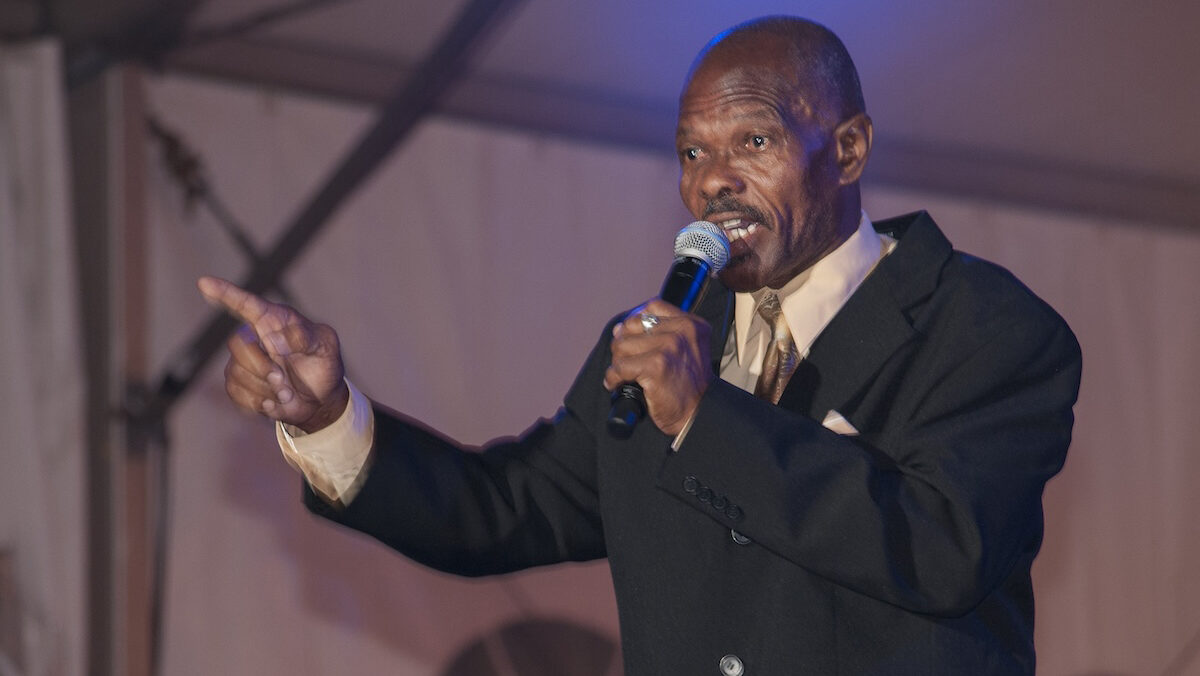50th Year of Crop Over Festival: Evolution of Calypso, Exploring the Story of Keithroy Mighty Destroyer

August 10, 2024
The Crop Over Festival, celebrating Barbados' cultural heritage, features music, competitions, and parties. Keithroy Mighty Destroyer Christian, a calypso trailblazer, shares his journey to becoming the first Monarch.
The Crop Over Festival in its 50th year, is a powerful testament to Barbados’ rich cultural heritage.
The festival has emerged as a celebration of the island’s enduring spirit. with its robust music, fierce competitions and vibrant parties, as the grand spectacle we know today.
It is safe to say that central to Crop Over’s evolution, was the introduction of the calypso competition, later known as the Pic-O-De-Crop. A platform where calypsonians use their voices to reflect on the social and political pulse of the nation. Among the early trailblazers of the calypso competition was Keithroy Mighty Destroyer Christian, who in 1975, at the age of 24, became the first Monarch.
Destroyer’s journey into the world of calypso began long before his historic win. Born in Antigua and Barbuda, he vividly recalled his early years being influenced by calypsonians like Sparrow and Lord Kitchener. When he migrated to Barbados at the tender age of nine, that love deepened and he took every opportunity to write and sing kaiso, albeit for fun. It wasn’t long before his talent caught the attention of a woman from his district named Shirley Jordan.
According to him, Shirley knew some people who organised shows at the Bridgetown Plaza. One day she introduced him to them and this meeting ignited his career.
Destroyer quickly made a name for himself. He was making great strides until one day he was told that a crucial component was missing in his efforts to be a serious calypsonian.
“The people would tell me that if I wanted to be a real calypsonian, I couldn’t use the name Keithroy. At the time Lord and Mighty were popular [sobriquets], so they tell me to come up with a name. Passing through Oistins a day as I was headed to Silver Sands, I saw a fishing boat named The Destroyer and I knew there and then that was the right one for me, the Mighty Destroyer,” he proudly recounted.
In the 1970’s Barbados was experiencing a cultural renaissance, with the government looking to revitalize the island’s traditions. Among these was Crop Over, a festival that dated back to the 18th century and rooted in the celebrations held at the end of the sugar cane harvest. The festival had faded into obscurity by the mid-20th century, but in 1974, the Barbados Board of Tourism, driven by its Public Relations Specialist Julian Marryshaw, set up a committee to revive the festival and bolster the island’s appeal during those traditionally slow summer months.
The 1974 revival was a pivotal moment, though it lacked a key ingredient that would later define it: a national calypso competition. At the time, calypso was still very much a grassroots affair, with local competitions held at different times of the year in villages and small venues and staged by calypsonians like Roy Byer, the Calypso Enterprises (which was founded by Don Sir Don Marshall, Ewatt Mighty Viper Greene and Charles Romeo Smith), as well as private promoters including Al Gilkes and Mark Williams.
During this first year, Destroyer was a member of Sing Out Barbados which travelled across the island to enhance the Crop Over celebrations with folk music. In spite of this outreach Destroyer believed that calypso had a better chance of driving the festival. Against this backdrop, he and fellow calypsonian Edrick Mighty Dragon Jordan pitched Marryshaw the idea of integrating a calypso competition into Crop Over. They argued that it would bring a “carnival-type atmosphere” to the festival and engage both locals and visitors in the island’s culture.
Marryshaw was convinced and in 1975, the first official state-run Crop Over calypso competition was held at Marine House, Hastings. The competition featured seven calypsonians, prominent figures like Viper, Lord Wilson, MacDonald Mighty Grynner Blenman, Edward Mighty Herring Rowe and Dragon.
The significance of this event cannot be overstated, despite the modest beginnings and an audience of what some estimated was about 40. For the first time, calypsonians had a national platform to showcase their talents during Crop Over, marking the beginning of a new era for both the festival and the genre.
Destroyer was victorious that year with his self-penned Crop Over Bacchanal and Come Together. Yet, the aftermath of his win was bittersweet. Despite promises of a $300 cash prize and a trip to Trinidad to perform, he recalled only receiving a trophy. Part of this story he reluctantly shared is a memory that he described as embarrassing.
According to him, a full year passed before he contacted Marryshaw to report that he hadn’t received his prizes. He was instructed to visit a specific person at BWIA’s office at the airport, explain that he was the calypso king of Barbados and he would then be given his instruments for travelling to Trinidad.
Destroyer grimaced as he recalled doing exactly that, only to find that when he arrived, no one had a clue about the arrangement he mentioned, and he was turned away.
“Look! I tell you I was embarrassed. I gave back Marryshaw the trophy ‘cause it was a challenge trophy and didn’t have my name on it, and I washed my hands of that.”
Disillusioned, Destroyer chose not to defend his title and in his absence, Grynner took the crown in 1976 at Culloden Farm. However, in November that same year, he competed and won the Calypso Enterprises’ Independence competition.
Crop Over the following year was marked by uncertainty and the competition was cancelled. It wasn’t until 1978, when the Ministry of Education and Culture, under the auspices of Minister of Education Louis Tull, took over the organisation of the Festival, that the competition was reintroduced. It was moved to the National Stadium, a venue that could accommodate a larger audience and give the event the prestige it deserved.
Destroyer returned to this stage and reclaimed his title. He earned $310 with the songs I Man Bitter and Message To The People. This time, the competition was part of a larger event that included a Queen show, which he felt was the main attraction for the estimated 15,000 strong crowd.
The competition continued to gain momentum as a stand-alone event with an increasingly larger number of people vying for the crown and fans travelling from every corner of the island to support their favourites.
Looking back on his journey and contribution, Destroyer is filled with pride.
“It was just a start, but I felt that it would grow. There was a lot of sacrifices made to get to this place. I must say, a lot of the people who are benefiting now, are benefiting as a result of the hard work we put in, even if we didn’t get anything in particular from it. But the thing is, that was the vision. We always had that feeling that one day this was going to get big,” he said.
Destroyer felt a sense of joy in 1986 when the NCF inaugurated a junior calypso monarch competition. This feeling reached new heights in 1992 when his daughter, the songstress Keisha Christian, created history as the first junior queen, a title she successfully defended in 1993.
Today as the 73-year-old watches younger generations of calypsonians take to the stage, he feels a deep sense of satisfaction. The vision he and Dragon had for a calypso competition in Crop Over has come to fruition and is evidence of the hard work of those early pioneers.
As the festival looks to the future, Destroyer remains hopeful that even with the rise of new genres of the artform, calypso will continue to be a platform for storytelling, education and social commentary. In his opinion, the calypsonian is more than just a performer— he/she is a messenger, a comedian, a historian and a voice for the people. (IMC)
“The calypsonian is society’s mirror and that has to continue to be the bedrock of the festival.”
(IMC)


